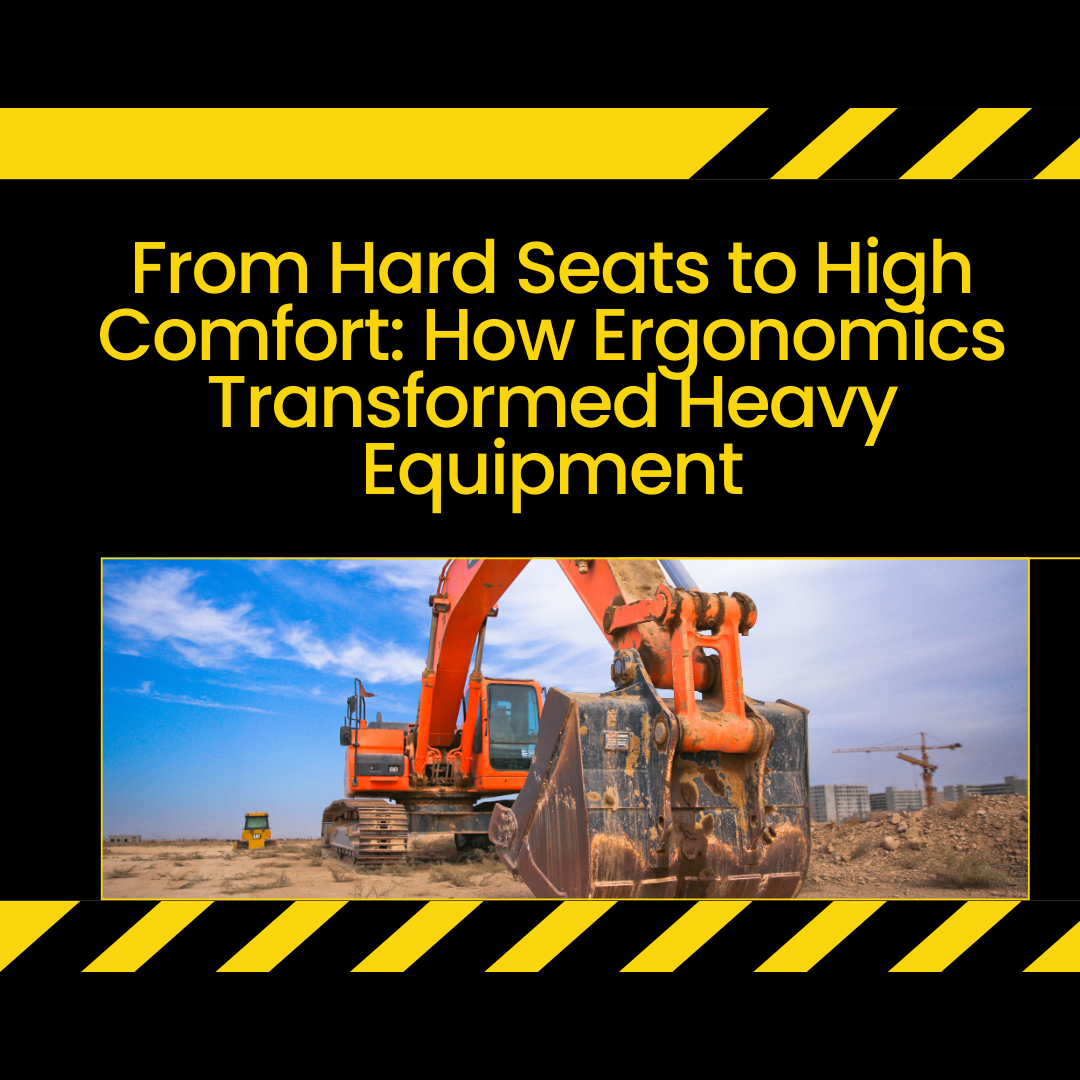Then and Now
From Hard Seats to High Comfort: How Ergonomics Transformed Heavy Equipment
If you’ve ever climbed into the cab of a vintage dozer or an old-school excavator, you know one thing instantly: operators didn’t get much love from manufacturers back then. Hard steel seats, minimal suspension, and controls that left wrists and shoulders aching were the norm. But over time, the heavy equipment industry has undergone a dramatic shift. Today’s machines prioritize ergonomics, and the difference is more than just comfort—it’s about safety, productivity, and preventing long-term injuries.
The Old Days: Hard Work, Harder Machines
Operators in the past were tough—but their machines weren’t. Typical features included:
- Rigid seats with little or no cushioning, leaving operators battered after hours.
- Manual controls that required repetitive motions and significant force.
- Limited cab suspension, transferring every bump and vibration straight to the operator.
- Poor visibility and cramped layouts, forcing awkward postures to see the job.
The result? Chronic back pain, joint strain, repetitive stress injuries, and accelerated wear-and-tear on the human body. Some operators joked that their equipment outlasted their spines.
The Rise of Ergonomics
Manufacturers began realizing that a comfortable, well-designed cab wasn’t a luxury—it was a productivity tool. By reducing operator fatigue and strain, crews could work longer, more accurately, and safely. Modern ergonomic improvements include:
Advanced Seating
- Air-ride seats that absorb bumps and vibrations.
- Adjustable lumbar support and armrests that reduce shoulder and back strain.
- Heated and ventilated options for extreme climates.
Intuitive Controls
- Joystick controls that minimize repetitive motion.
- Controls positioned within easy reach, reducing twisting and overextension.
- Electronic and touch-sensitive interfaces replacing heavy manual levers.
Vibration & Noise Reduction
- Cab insulation and advanced suspension systems protect operators from whole-body vibration, a major contributor to chronic spinal issues.
- Quieter cabs reduce fatigue and improve focus.
Visibility & Layout
- Larger windows and cameras for better sightlines.
- Thoughtful placement of instruments and controls to reduce awkward postures.
- Climate-controlled cabs that maintain operator comfort in all conditions.
Benefits Beyond Comfort
The shift toward ergonomics isn’t just about luxury—it prevents injuries and chronic conditions, including:
- Back, neck, and shoulder pain from prolonged awkward postures.
- Carpal tunnel and tendonitis from repetitive control movements.
- Fatigue-related accidents, improving overall job site safety.
- Long-term health issues like spinal degeneration and joint stress.
In addition, operators who are comfortable and supported are more productive and precise, which directly impacts project timelines and profitability.
Comparing Old vs. New
|
Feature |
Vintage Equipment |
Modern Equipment |
|
Seats |
Hard steel, minimal padding |
Air-ride, fully adjustable with lumbar support |
|
Controls |
Manual levers, high force |
Joysticks, low-force electronic controls |
|
Cab Comfort |
Limited ventilation, noisy |
Climate-controlled, quiet, vibration-reducing |
|
Visibility |
Small windows, blind spots |
Panoramic views, cameras, optimized layout |
|
Operator Health |
High risk of chronic pain |
Reduced injury risk, improved longevity |
The evolution of heavy equipment shows that operator well-being is now as important as machine performance. Ergonomics has gone from a “nice-to-have” to a core design principle, helping operators work smarter, safer, and longer. For anyone running iron—whether on a short job or a multi-year project—these improvements aren’t just comfort upgrades—they’re career insurance.

